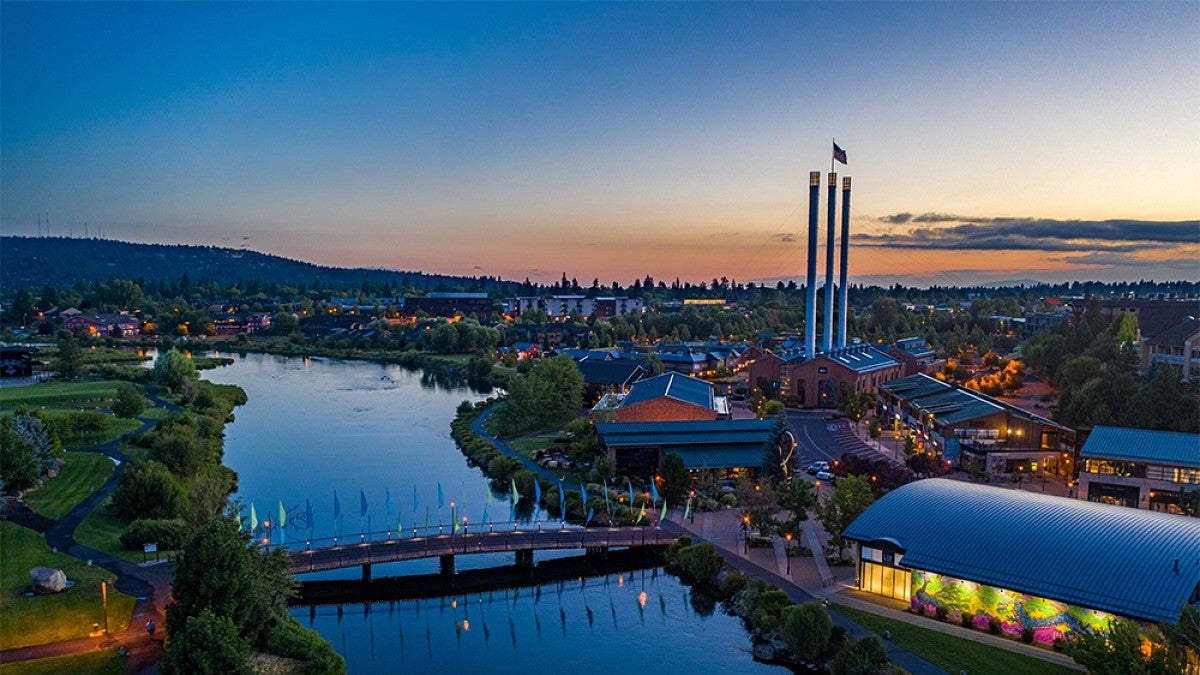
Keeping the Stars Bright
DECEMBER 2, 2024
Do you ever wonder why stars don’t shine in cities?
Lights from street lamps, cars and office buildings create a phenomenon known as “skyglow,” which blocks the bright illumination from our atmosphere—a phenomenon that astronomers are concerned could limit further scientific research.
The DarkSky Initiative is a nonprofit global authority that aims to limit light pollution and conserve the night sky. Founded in 1988, it consists of more than 70 local chapters worldwide working to help restore starry nights.
In Oregon, one of the most active chapters in the US, volunteers monitor 55 sensors that measure the luminance of the night sky—including one in Bend, just northwest of the University of Oregon’s astronomy facility, Pine Mountain Observatory (PMO).
Protecting PMO is a priority for DarkSky Oregon since it’s one of the only astronomy research centers in the state.
“The data shows that we are seeing an increase in light pollution by 7% each year,” says DarkSky Oregon’s chairperson, Bill Kowalik, who monitors the Bend sensor.
“The situation is somewhat dire, but we’re optimistic for the future because we have many groups around Oregon looking to become DarkSky certified.”
How light pollution affects astronomy research
Not only does light pollution restrict stargazing, but it makes studying our galaxy more difficult for astronomers, who use telescopes to collect light emitted by distant celestial objects. The wavelengths of this light can be used to determine the chemical compositions of stars, the distance to other galaxies, or even the motion of black holes, according to the Center for Astrophysics at Harvard.
Although most of these telescopes are located outside of cities, this doesn’t mean they’re safe from light pollution. The unshielded light from metropolises seeps into rural areas. Additionally, independent companies launch satellites into low orbit, blocking long exposure images taken by telescopes.
To protect astronomers, DarkSky is compiling a database of case laws and statutes addressing lighting issues. Additionally, DarkSky educates the public through events such as the annual Under One Sky Conference.
Creating DarkSky Places
Through the International Dark Sky Places (IDSP) program, DarkSky offers certification for parks and communities that follow best practices for outdoor lighting. More than 200 locations in 22 different countries have become certified DarkSky Places.
To help communities earn certification, DarkSky Initiative and Illuminating Engineering Society developed the following five principles for responsible outdoor lighting:
- Useful: Only use light where light is needed.
- Targeted: Direct light is targeted where it is needed.
- Low Level: Light should be no brighter than necessary.
- Controlled: Only use light when it is needed.
- Warm-colored: Use warmer colored lighting.
Results have shown that light pollution numbers are somewhat stable in DarkSky certified areas.
In Oregon, DarkSky has begun working with the City of Portland to help it earn DarkSky certification in hopes of keeping the state a place where astronomical research can be conducted.
Light pollution has quickly become a pressing and underrecognized issue. DarkSky Initiative is a leading advocate for this cause, attempting to restore our beautiful night skies.
—By Leo Brown, College of Arts and Sciences

